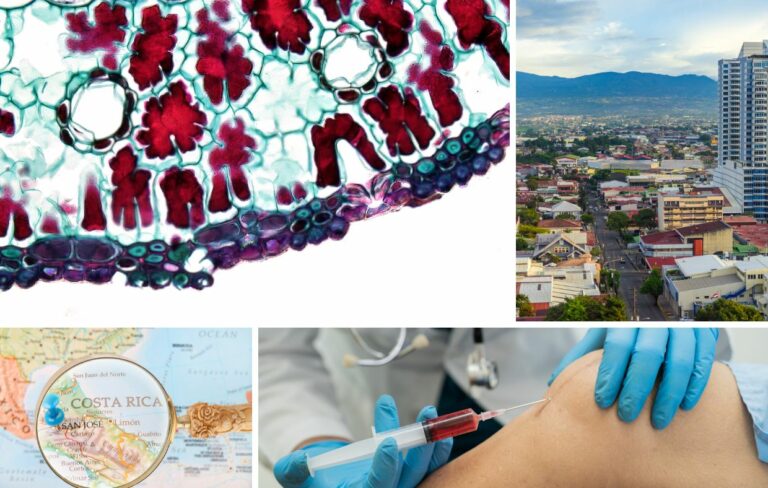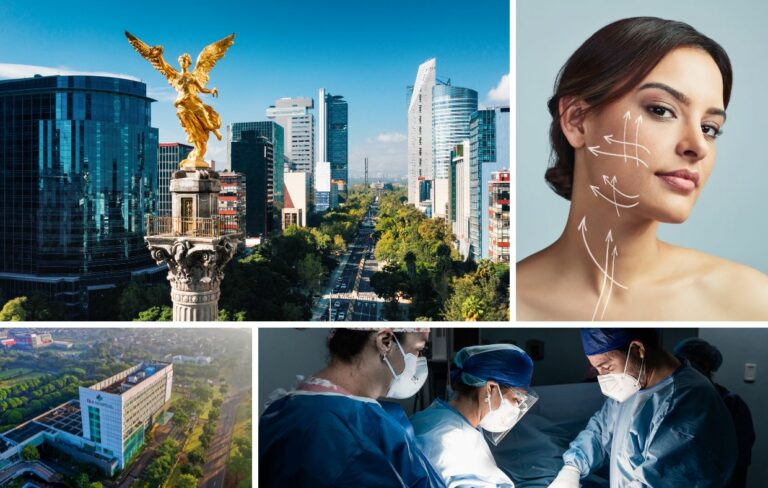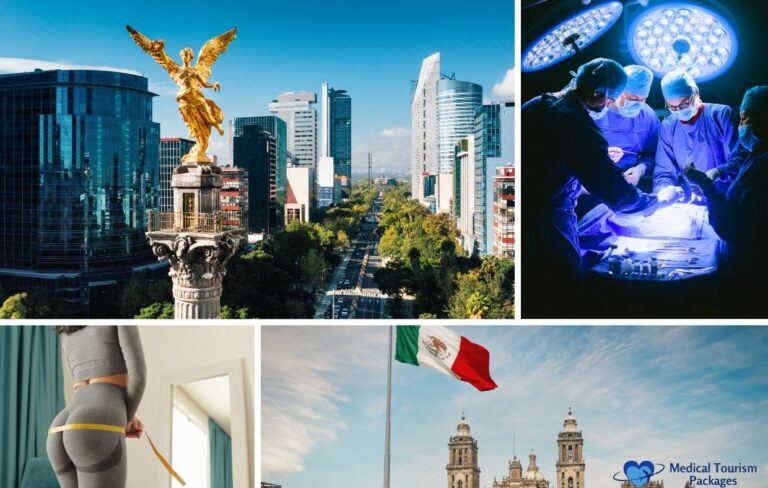Book Appointment Now
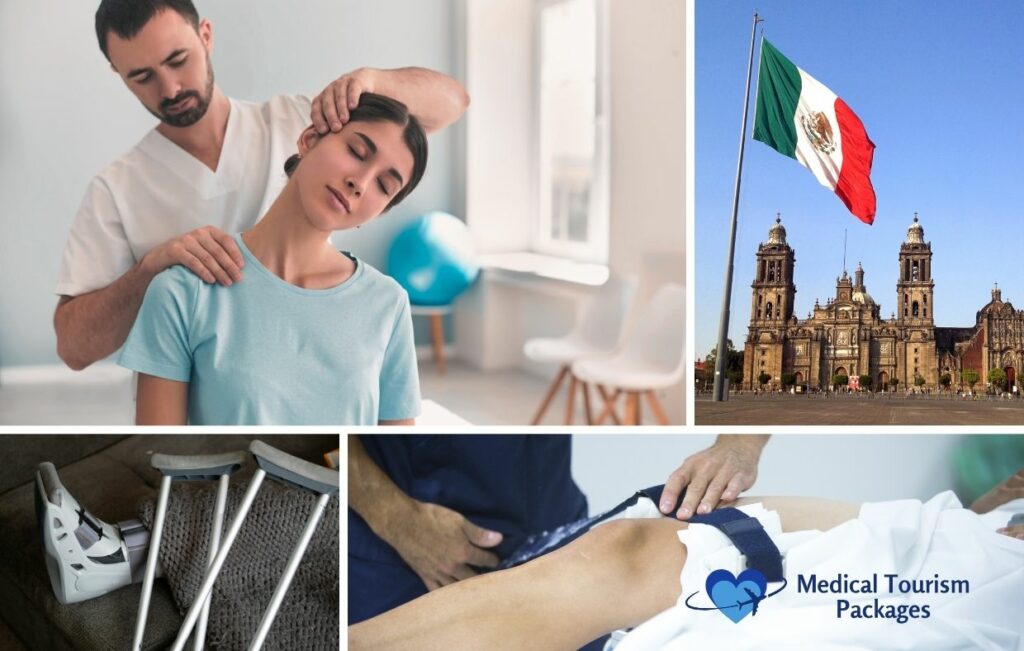
Orthopedic Surgery in Mexico: Definition, Cost Savings, and Complete Process Guide
Orthopedic surgery in Mexico refers to medical procedures performed by board-certified surgeons to treat musculoskeletal conditions at accredited facilities across the country. These procedures range from joint replacements and spinal surgeries to sports medicine interventions and fracture repairs. Mexico has emerged as a leading destination for medical tourism, particularly for patients seeking high-quality orthopedic care at significantly reduced costs compared to the United States and Canada.
The cost difference is substantial. Patients typically save 40% to 70% on orthopedic procedures in Mexico, even after accounting for travel expenses. A total knee replacement that costs $35,000 to $50,000 in the United States may cost $8,000 to $15,000 in Mexico. Hip replacements, spinal fusions, and rotator cuff repairs show similar savings. These price reductions don’t reflect inferior care. Many Mexican orthopedic surgeons train at internationally recognized institutions and maintain certifications from organizations like the Mexican Council of Orthopedics and Traumatology.
This guide walks you through the complete process of obtaining orthopedic surgery in Mexico. You’ll learn how to research and select qualified surgeons, understand the medical infrastructure, navigate pre-operative requirements, manage logistics and travel, and prepare for recovery. Whether you’re considering surgery due to cost constraints, long wait times in your home country, or simply exploring your options, this comprehensive resource provides the information you need to make an informed decision about your orthopedic care.
Why Do Americans and Canadians Choose Orthopedic Surgery in Mexico?
Americans and Canadians choose Mexico for orthopedic surgery primarily due to significant cost savings, shorter wait times, and access to modern medical facilities with internationally trained surgeons. Mexico’s medical tourism sector has experienced significant growth, with the market valued at USD 431.74 million in 2024 and projected to reach USD 1,153.02 million by 2032, representing a compound annual growth rate of 13.06%. This expansion reflects increasing international confidence in Mexican healthcare infrastructure and expertise.
The private sector dominates medical tourism services. Private hospitals and clinics account for 54.47% of medical tourism market revenue in 2024. These facilities typically offer modern equipment, English-speaking staff, and patient coordination services designed specifically for international patients. Major surgical procedures, including complex orthopedic operations, are primarily managed by specialized private hospital networks rather than public healthcare systems.
Mexican orthopedic surgeons follow the same fundamental principles and techniques as their counterparts worldwide. They diagnose conditions through physical examinations, imaging studies, and patient history. Treatment plans may include conservative management or surgical intervention depending on severity. Surgical procedures utilize current medical technology and evidence-based protocols. The key distinction lies not in the quality of care but in the cost structure, which allows patients to access the same procedures at substantially lower prices than in the United States or Canada.
For Canadian patients, another compelling reason is avoiding the lengthy wait times in provincial healthcare systems. Many orthopedic procedures through public Canadian healthcare involve wait times exceeding 8 months, during which patients manage chronic pain and reduced mobility. Mexican facilities typically schedule surgeries within 2 to 4 weeks of consultation, providing rapid relief for those suffering from debilitating joint conditions.
Which Orthopedic Surgeries Should You Consider Getting in Mexico?
The procedures most suitable for medical tourism in Mexico include elective surgeries with predictable outcomes and established protocols. Mexican orthopedic facilities offer a comprehensive range of surgical procedures, supported by a robust devices market valued at USD 1.22 billion in 2025 and projected to reach USD 2.34 billion by 2033 with an 8.5% compound annual growth rate. This market growth supports advanced surgical options across multiple specialties.
Mexican facilities use the same implant brands available in the United States and Canada, including products from manufacturers like Zimmer Biomet, Stryker, and DePuy Synthes. Surgeons who treat international patients often hold certifications from American or Canadian medical boards and have completed fellowships at institutions in the United States or Europe.
The best candidates for medical tourism are elective procedures addressing chronic conditions like osteoarthritis, degenerative disc disease, and sports injuries. These allow adequate time for research, planning, and coordination. Avoid considering Mexico for emergency surgeries, complex revision procedures, or cases requiring intensive care capabilities.
How Much Money Will You Save on Orthopedic Surgery in Mexico?
You can expect to save between 56% and 67% on high-value orthopedic procedures in Mexico compared to United States prices. The average patient realizes substantial savings even after accounting for travel expenses, accommodations, and pre-operative consultations. These savings remain significant for patients with insurance who face high deductibles and co-insurance requirements.
| Procedure Type | Mexico Cost Range | US Cost Range | Canada Cost Range | Your Estimated Savings |
|---|---|---|---|---|
| Total Hip Replacement | $8,000 – $15,000 | $32,000 – $50,000 | $15,000 – $25,000* | 65% – 70% |
| Total Knee Replacement | $8,500 – $16,000 | $35,000 – $55,000 | $16,000 – $28,000* | 67% – 71% |
| Spinal Surgery (Fusion) | $15,000 – $28,000 | $80,000 – $150,000 | $40,000 – $75,000* | 75% – 81% |
| Shoulder Surgery (Rotator Cuff) | $5,000 – $15,000 | $20,000 – $40,000 | $12,000 – $22,000* | 56% – 63% |
| Arthroscopic Knee Surgery | $3,500 – $7,000 | $10,000 – $25,000 | $8,000 – $15,000* | 65% – 72% |
*Canadian costs reflect private pay rates. Public system costs are covered by provincial health insurance but wait times exceed 8 months for many procedures.
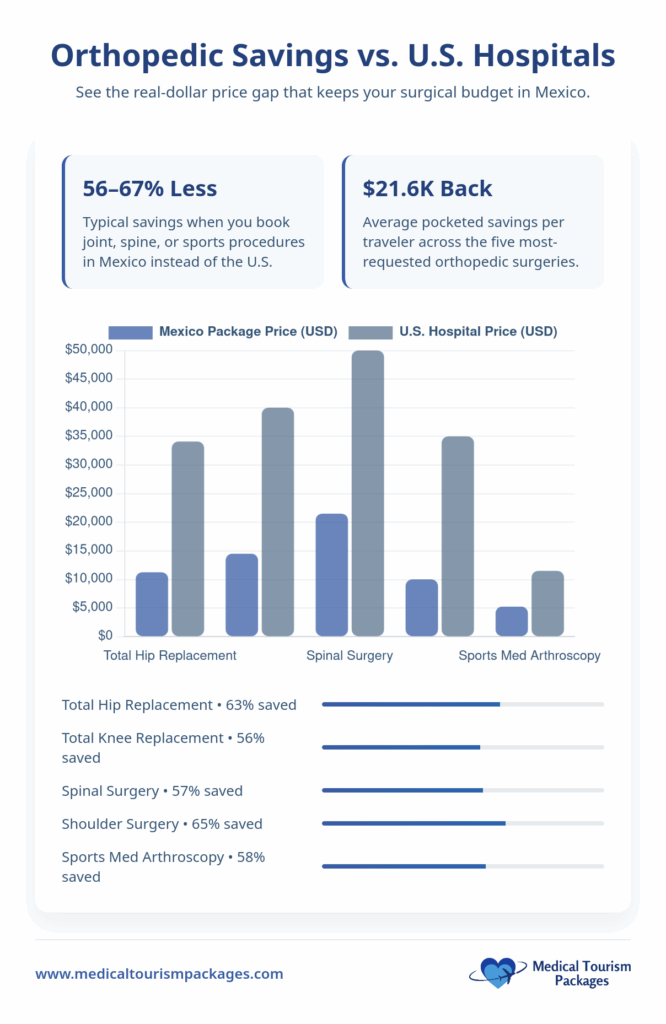
What’s Included vs What Costs Extra
Understanding what’s included in your quoted price versus what costs extra helps you compare facilities accurately and avoid unexpected charges:
Typically Included:
- Surgeon fees
- Anesthesia
- Facility charges
- Implants or medical devices
- Initial consultations
- Post-operative care during hospital stay
- Basic physical therapy sessions
Usually Cost Extra:
- Diagnostic imaging (X-rays, MRIs, CT scans)
- Pre-operative lab work
- Extended physical therapy beyond basic sessions
- Medications for home use
- Recovery hotel accommodations
- Ground transportation
- Airfare
- Meals not provided by hospital
Factors that affect your final cost:
- Certification level: Facilities with COFEPRIS (Federal Commission for the Protection against Sanitary Risk) certification only typically charge less than JCI-accredited (Joint Commission International) hospitals that meet international standards.
- Implant quality: Standard implants from reputable manufacturers cost less than state-of-the-art components with advanced materials or custom-designed features.
- Package inclusions: Basic packages cover surgery and immediate post-operative care. Comprehensive packages include extended physical therapy, recovery accommodations, medical escort services, transportation, and follow-up consultations.
- Location: Border cities like Tijuana and Mexicali often charge less than major metropolitan centers like Mexico City, Guadalajara, or Monterrey, though the latter may offer more specialized expertise and advanced facilities.
Request detailed price breakdowns from multiple facilities. All-inclusive quotes prevent unexpected charges and allow accurate comparison between providers.
How Can You Verify the Safety of Mexican Orthopedic Hospitals?
You can verify hospital safety by checking for specific accreditations, reviewing surgeon credentials, examining patient outcomes data, and understanding financial protections offered. Mexican facilities that cater to international patients have established strong safety records, with accredited facilities reporting remarkable success rates built over a decade of service to medical tourists.
Key Safety Indicators to Look For
- Joint Commission International (JCI) accreditation: Provides the most rigorous quality benchmark using the same performance metrics applied to U.S. healthcare facilities. JCI surveys facilities every three years and hospitals must maintain continuous compliance between surveys covering patient safety, infection control, medication management, surgical protocols, and quality improvement processes. Always prioritize JCI-accredited facilities for your surgery.
- COFEPRIS certification: The Federal Commission for the Protection against Sanitary Risk operates under Mexico’s Ministry of Health, licensing and monitoring all healthcare facilities. COFEPRIS inspects hospitals, reviews surgical outcomes, investigates complaints, and enforces sanitary regulations. This represents the minimum regulatory requirement for operating in Mexico.
- Surgeon credentials: Verify that your surgeon holds a Cédula Profesional (Mexican medical license) plus board certification from the Mexican Council of Orthopedics and Traumatology (CMCOT). The most qualified surgeons also hold certifications from American or Canadian medical boards and have completed fellowships at U.S. or European institutions. Request copies of all certifications directly from the surgeon’s office.
- Patient satisfaction data: High satisfaction rates indicate quality care across multiple dimensions including successful surgical outcomes, effective pain management, attentive nursing care, and smooth coordination of services. Verify that reviews come from authenticated patients and consider both volume and consistency of feedback across multiple platforms.
- Financial guarantees: Reputable facilities offer financial guarantees covering hotel accommodations and transportation for up to four days if complications require corrective procedures. Some facilities extend coverage for longer periods or include the cost of the corrective procedure itself. These guarantees demonstrate confidence in surgical outcomes and commitment to patient welfare.
- Hospital procedure volume: Facilities performing higher numbers of specific procedures typically achieve better results due to surgical team experience and refined protocols. Ask about annual volume for your specific procedure, not just general orthopedic surgery numbers.
Risk Factors to Consider
Despite strong safety records at accredited facilities, certain risks remain:
- Language barriers: Can complicate communication about symptoms or concerns even at facilities advertising bilingual services.
- Distance from home: May delay treatment if complications arise after returning to your home country.
- Different medical liability systems: Affect recourse options if outcomes fall below standards.
- Continuity of care challenges: Require effective communication between Mexican surgeons and home-country physicians for long-term follow-up.
You can mitigate these risks by choosing JCI-accredited facilities, selecting bilingual surgeons and staff, establishing clear follow-up protocols before traveling, and ensuring your primary care physician supports your medical tourism decision and agrees to provide follow-up care.
Which Mexican Hospitals Should You Consider for Your Surgery?
You should consider hospitals based on their accreditation status, location relative to the U.S. border, specialization in your specific procedure, international patient volume, and availability of comprehensive English-language support. Hospital selection significantly impacts surgical outcomes and patient experience.
Leading Orthopedic Surgery Hospitals
| Hospital Name | City | Accreditation | Your Procedure Available | Distance from US Border | English Support |
|---|---|---|---|---|---|
| Hospital Ángeles Tijuana | Tijuana | JCI, COFEPRIS | Joint replacement, spine surgery, sports medicine | Walking distance (San Diego) | Full bilingual staff |
| Centro Médico ABC | Mexico City | JCI, COFEPRIS | Complex spine procedures, joint revision surgery, trauma | 1,800 miles | Full bilingual staff |
| Hospital Ángeles Lindavista | Mexico City | JCI, COFEPRIS | Hip/knee replacement, minimally invasive spine, shoulder surgery | 1,800 miles | Full bilingual staff |
| Hospital de Especialidades del IMSS | Guadalajara | COFEPRIS | General orthopedics, reconstructive surgery, pediatric orthopedics | 1,400 miles | Partial bilingual support |
Strategic Location Considerations
Tijuana provides the most accessible option for patients from the United States, particularly California residents. The city sits directly on the US-Mexico border with walking access from San Diego. Hospital Ángeles Tijuana specializes in high-volume joint replacements (5,000+ international patients annually) and has developed comprehensive medical tourism infrastructure. Ground transportation takes minutes from the border crossing. Return visits for follow-up care require minimal travel planning.
Mexico City hosts the country’s top-tier medical facilities with the most advanced equipment and specialized expertise. Centro Médico ABC and Hospital Ángeles Lindavista serve as referral centers for complex cases requiring subspecialized care (3,500+ and 4,000+ international patients annually respectively). The capital’s international airport offers direct flights from major North American cities. These facilities treat both domestic patients and international medical tourists, maintaining higher patient volumes that support specialized orthopedic programs.
Guadalajara offers regional expertise with lower costs than Mexico City while maintaining quality standards. Hospital de Especialidades del IMSS functions as a teaching hospital affiliated with the Mexican Institute of Social Security (2,000+ international patients annually). The city provides a middle ground between border accessibility and metropolitan sophistication. International patients find fewer language barrier challenges due to significant expatriate populations.
Facility Evaluation Criteria
Evaluate hospitals based on these factors:
- JCI accreditation indicates compliance with international safety and quality standards
- Specialty programs demonstrate concentrated expertise in specific procedures
- International patient coordinators facilitate communication and logistics
- Modern surgical equipment includes computer-assisted navigation systems, arthroscopic towers, and advanced imaging capabilities
- International patient infrastructure includes bilingual staff, travel arrangement assistance, recovery accommodations, and coordination with home-country physicians
Several hospital groups operate multiple facilities across Mexico. Hospital Ángeles represents a network with locations in Tijuana, Mexico City, Guadalajara, Puebla, and other cities. Network affiliation can provide advantages if complications require transfer to another facility, though individual hospital quality varies within networks, so evaluate each facility independently.
How Do You Find and Verify a Qualified Orthopedic Surgeon?
You find and verify qualified surgeons by checking dual credentials (Mexican license plus international board certification), reviewing training history, and evaluating procedure-specific experience. The most sought-after surgeons maintain a Cédula Profesional (Mexican medical license) plus international board certification from American or Canadian medical boards.
Verification essentials:
- Mexican credentials: Cédula Profesional (basic license) and Mexican Council of Orthopedics and Traumatology (CMCOT) board certification
- International credentials: ACGME (U.S.) or RCPSC (Canada) residency completion demonstrates North American training standards
- Request documentation directly: Don’t rely solely on facilitator claims—get copies of certifications, licenses, and training records from the surgeon’s office
Must-ask questions before booking:
- Where did you complete medical school, residency, and fellowship training?
- How many of my specific procedure do you perform annually? (Request specific numbers, not general statements)
- What are your complication rates, infection rates, and revision surgery rates?
- Which hospitals do you have privileges at, and who is on your surgical team?
- How will you monitor my recovery after I return home?
Communication is critical: Conduct video consultations to assess English proficiency. Can the surgeon explain complex concepts clearly and answer questions directly? Obtain consultations with multiple surgeons to compare approaches and communication styles.
Red flags: Refuse to provide credentials, guarantee outcomes, pressure immediate scheduling, offer prices far below market rates, or dismiss your questions.
What is Your Step-by-Step Timeline from Booking to Recovery?
Your complete journey typically spans 6 to 12 weeks from initial contact to returning home, with the timeline varying based on procedure complexity and individual healing rates.
1. Research and Initial Consultation (1-3 weeks)
Research accredited hospitals and board-certified surgeons specializing in your procedure. Schedule remote consultations via video, phone, or secure messaging. Submit medical records including imaging studies, diagnostic reports, and medication lists. Surgeons provide preliminary assessments, explain recommended procedures, and supply detailed cost estimates. Most facilities require 20-50% deposits to secure surgery dates.
2. Medical Clearance and Pre-Travel Preparation (1-2 weeks)
Obtain medical clearance from your primary care physician including recent lab work, electrocardiogram, and any specialty clearances required. Stop medications as directed (typically blood thinners and anti-inflammatories 7-14 days before surgery). Arrange travel logistics, book recovery accommodations near the hospital, and submit all required documentation.
3. Arrival and Pre-Operative Assessment (2-3 days before surgery)
Arrive in Mexico at least 24-48 hours before surgery. Complete pre-operative testing including updated blood work, vital signs assessment, and anesthesia evaluation. Meet with your surgeon for final consultation to review the surgical plan and sign consent documents. Patient coordinators provide language support and logistics assistance.
4. Surgery and Hospital Stay (1-5 days)
Surgery duration varies: hip/knee replacements take 1.5-2.5 hours, complex spinal fusions require 3-6 hours. Hospital stays depend on procedure—hip and knee replacements typically need 3-5 days, spinal fusions 4-7 days, arthroscopic procedures often allow discharge within 24 hours. Physical therapy begins day 1-2.
5. Local Recovery Period (1-4 weeks)
Hip replacement patients typically stay 7-14 days post-surgery; knee replacement patients 10-21 days; spinal surgery patients 14-28 days before receiving travel clearance. Attend follow-up appointments for wound checks and suture removal (typically 10-14 days post-surgery). Continue physical therapy at hospital outpatient centers.
6. Return Home and Long-Term Follow-Up
Obtain medical clearance for air travel. Request comprehensive discharge documentation including operative reports, implant specifications, and follow-up care instructions. Coordinate with home-country physicians before returning. Continue physical therapy at home (6-12 weeks for joint replacements, 8-16 weeks for spinal procedures). Schedule follow-up imaging at 6 weeks, 3 months, 6 months, and 1 year, sending images to your Mexican surgeon for remote review.
What Are the Real Benefits You Can Expect?
You can expect substantial cost savings (50-70%), faster access to surgery (2-4 weeks vs 8+ months), modern medical facilities with state-of-the-art equipment, comprehensive rehabilitation services, and personalized attention throughout your care.
Key advantages include:
- Cost savings exceed 50% across all major procedures—hip replacements cost $15,500 in Mexico vs $40,000+ in the U.S., with no compromise in quality
- Immediate scheduling within 2-4 weeks vs 8+ month wait times in Canadian public systems
- Rapid sector growth at 13.06% CAGR indicates increasing international confidence and continuous improvement in patient services
- Same equipment as U.S. hospitals including products from Stryker, Zimmer Biomet, DePuy Synthes, and Medtronic
- Advanced surgical technology including computer-assisted navigation systems, robotic platforms, and high-definition arthroscopic equipment
- On-site rehabilitation centers with hydrotherapy pools, allowing physical therapy to begin within 24-48 hours post-surgery
- Personalized care with better nursing ratios, private rooms, and dedicated patient coordinators managing all logistics
- Pleasant recovery environment allowing patients to combine healing with leisure activities in comfortable settings
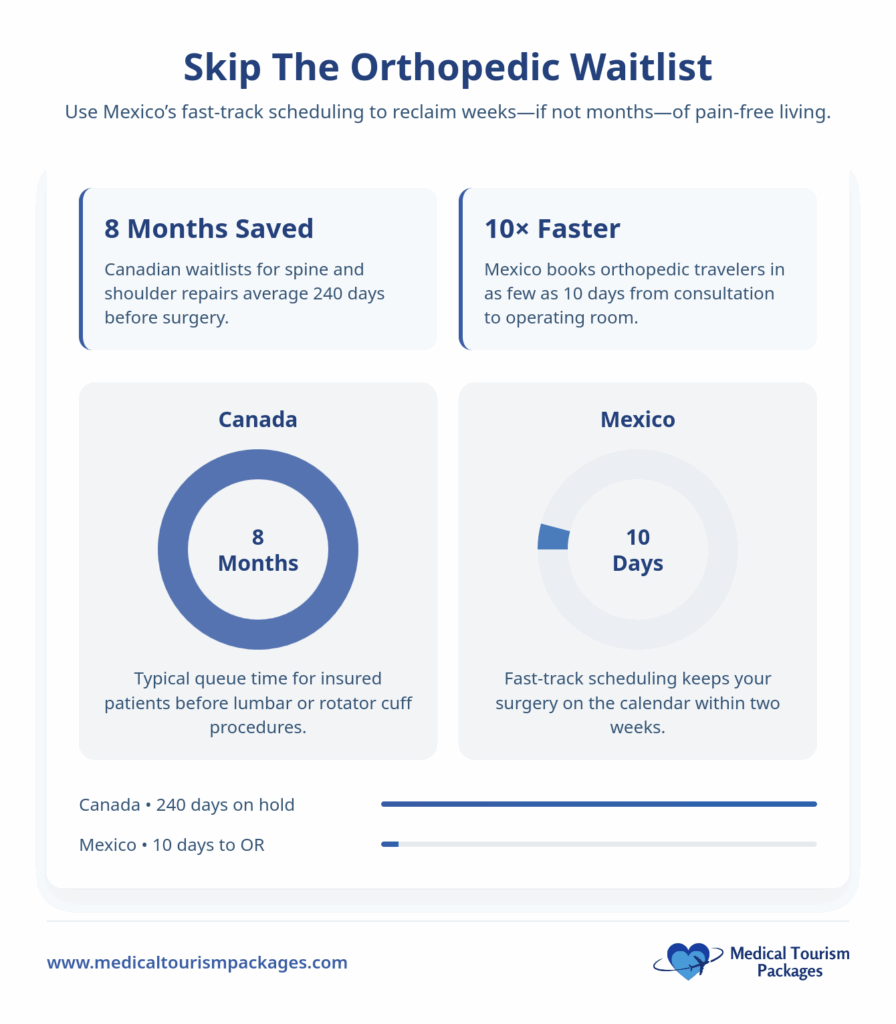
What Challenges Should You Prepare For?
You should prepare for language barriers, coordination difficulties with long-term follow-up care, travel-related risks during recovery, and limited legal recourse compared to domestic options. While manageable with proper planning, these challenges require realistic expectations.
Key challenges include:
- Language barriers exist despite bilingual claims—nursing staff, therapists, and administrative personnel often have limited English; discharge instructions may be primarily in Spanish
- Follow-up coordination gaps as some home-country physicians refuse to provide care for surgeries performed abroad; medical records don’t interface across borders
- Physical therapy transitions may not transfer seamlessly; home therapists unfamiliar with Mexican protocols might modify rehabilitation plans
- Long-term monitoring challenges as orthopedic implants require years of follow-up; complications months or years later are difficult to attribute without direct surgeon access
- Travel risks post-surgery including deep vein thrombosis from long flights, airport navigation with limited mobility, and complications arising when far from your surgical team
- Extended stay challenges including time away from family support, isolation in unfamiliar environments, and additional hotel costs reducing overall savings
- Legal recourse takes 2-5 years through Mexican courts with different procedural rules, lower damage awards, limited contingency fee arrangements, and upfront legal costs
- No insurance coverage for complications—most U.S. health plans don’t cover treatment of complications from surgeries performed abroad
Are You a Good Candidate for Surgery in Mexico?
You are a good candidate if you have chronic orthopedic conditions requiring elective surgery, reasonable overall health, ability to travel and stay abroad for 2-4 weeks, financial motivation, and realistic expectations about outcomes.
You’re a good candidate if you have:
- Osteoarthritis requiring joint replacement or chronic joint pain unresponsive to conservative treatment (physical therapy, medications, injections)
- Degenerative disc disease causing chronic back or neck pain that has failed conservative management
- Sports injuries requiring arthroscopic surgery such as torn meniscus, ACL ruptures, rotator cuff tears, or labral damage
- Reasonable health status with well-controlled chronic conditions but without serious comorbidities (ASA physical status I or II)
- Financial constraints due to inadequate insurance, high deductibles, or lack of coverage
- Time flexibility to remain away from home and work for 2-4 weeks
- Strong support system with companions who can travel and assist during recovery
- Research-oriented approach and willingness to thoroughly vet facilities and surgeons
You should NOT go to Mexico if you have:
- Emergency surgical needs requiring immediate intervention (acute fractures, dislocations, infections)
- Complex revision surgeries involving implant removal, infection treatment, or bone reconstruction—these need subspecialized expertise best managed close to home
- Severe comorbidities including unstable heart disease, poorly controlled diabetes, significant obesity, or active infections that require intensive care capabilities
- Inability to travel due to mobility restrictions making air travel dangerous
- No home-country follow-up arranged—you need a primary care physician or orthopedist willing to provide post-operative care
- Financial instability making you unable to afford potential complication costs or emergency return travel
- Active substance abuse that complicates anesthesia and healing
- Unrealistic timeline pressures forcing rushed surgeon selection without proper research
Will Your Insurance Help Pay for Surgery in Mexico?
Most insurance won’t cover the surgery upfront, but you may obtain partial reimbursement afterward, and HSA funds can be used tax-free for procedures performed abroad. Most patients pay out-of-pocket for procedures performed abroad.
Coverage options and financial considerations:
- U.S. health insurance rarely covers elective procedures outside the United States—employer plans, marketplace policies, Medicare, and Medicaid restrict coverage to domestic networks
- HSA funds can be used tax-free for qualified medical expenses including procedures performed abroad
- Partial reimbursement possible if you submit detailed documentation (itemized invoices, operative reports, imaging, surgeon credentials, proof of payment, medical necessity justification) and appeal denials
- Canadian provincial plans do not reimburse for elective procedures performed outside Canada; private supplemental insurance may offer limited international coverage
- FMLA certification available for up to 12 weeks unpaid, job-protected leave—U.S. employers must accept certification from foreign healthcare providers
- Medical tourism insurance covers complications ($200-$1,000 for policies with $25,000-$250,000 coverage limits) from companies like IMG Global and Trawick International
- Financing available through CareCredit, Alphaeon Credit, and United Medical Credit with 3-5 year terms, 620-640 minimum credit scores, and 6-20% APR interest rates
What Do You Need to Do Before Traveling for Surgery?
You need to complete required medical tests within 30 days of surgery, optimize your health status, pack essential documents and medications, and arrange all travel logistics. Proper preparation increases the likelihood of successful surgery and smooth recovery.
Medical tests you must complete:
- Complete blood count and metabolic panel to check for infections, anemia, or organ dysfunction
- Cardiac clearance if over 50 including electrocardiogram (EKG) and possibly stress testing
- X-rays or MRI of affected area (recent, ideally within 3 months) on CD/DVD plus physical films as backup
- Medical history documentation including previous surgeries, chronic conditions, current medications, and allergies
- Additional tests as needed: Hemoglobin A1C for diabetics, coagulation studies for bleeding disorders, pulmonary function testing for smokers
Pre-operative health optimization:
- Control blood sugar (A1C below 7.0% for diabetics) and manage blood pressure to target ranges
- Stop smoking at least 4 weeks before surgery
- Discontinue blood thinners, aspirin, and anti-inflammatory drugs 7-14 days before surgery as directed
- Stop supplements affecting bleeding (vitamin E, fish oil, herbal preparations)
What to pack for your medical trip:
- All medications in original pharmacy containers with sufficient quantities for entire stay plus extra days
- Medical records and test results including imaging on CD/DVD—keep one set in carry-on, another in checked baggage
- Comfortable, easy-access clothing: loose-fitting pants/shorts, button-front shirts, slip-on shoes
- Passport and travel documents: verify passport validity for 6+ months; bring photocopies stored separately; print all confirmations
- Emergency contact information: family contacts, Mexican surgeon details, hospital numbers, U.S. Embassy information
- Phone chargers and adapters for Mexican outlets (Type A and B plugs, 127V)
Home and physical preparation:
- Strengthen supporting muscles with pre-operative exercises
- Practice using assistive devices (crutches, walkers, canes)
- Lose 5-10% body weight if overweight
- Install grab bars in bathrooms and remove tripping hazards at home
- Prepare and freeze meals for post-return recovery
- Arrange help with housework, yard work, and pet care
Travel arrangements:
- Book flights with adequate connection time; request wheelchair assistance if needed
- Choose aisle seats for easier restroom access
- Arrange ground transportation (many facilities provide airport pickup)
- Reserve recovery accommodations near hospital with accessibility features
Need Help Planning Your Orthopedic Surgery in Mexico?
Navigating medical tourism can feel overwhelming. Medical Tourism Packages simplifies the process by connecting you with JCI-accredited hospitals, board-certified surgeons, and comprehensive care packages. Their experienced coordinators handle everything from initial consultations to post-operative follow-up, ensuring quality care at transparent prices.
Ready to explore affordable, high-quality orthopedic surgery? Medical Tourism Packages provides personalized guidance for your specific procedure. Get matched with pre-vetted facilities, receive detailed cost comparisons, and access dedicated support throughout your journey. Contact Medical Tourism Packages today for a free consultation.
Frequently Asked Questions About Orthopedic Surgery in Mexico
How long do I need to stay in Mexico after my surgery?
Length of stay depends on your procedure and healing. Hip replacement patients typically remain 7–14 days before flying, knee replacements 10–21 days, and spinal surgeries 14–28 days. Your surgeon will check your progress, remove sutures or staples (usually at 10–14 days), and clear you for safe travel to minimize risks like blood clots or wound issues.
What happens if I have complications after returning home?
Contact your Mexican surgeon right away—most offer remote consultations—and seek urgent evaluation locally (ER or orthopedic surgeon) if needed. Many reputable facilities provide financial guarantees for return visits to correct issues, but you’ll need to travel back to Mexico for treatment. Your surgeon can coordinate with your local doctors remotely. Note that most U.S. insurance plans won’t cover complications from surgeries performed abroad, so you may pay out-of-pocket for care at home.
Can I bring a companion or family member with me?
Yes—bringing a companion is encouraged. They can provide emotional support, assist with mobility and daily activities, help communicate with staff, manage appointments and medications, and advocate for you if language barriers arise. Recovery hotels often offer companion rooms at reduced rates, and some surgery packages include companion lodging. Having someone with you generally improves the overall experience and outcomes.
How do I get my medical records to share with my home doctor?
Request comprehensive discharge records before leaving Mexico: operative reports, implant brand/model with lot numbers, pathology reports (if applicable), imaging on CD/DVD, discharge summaries, prescriptions, physical therapy protocols, and follow-up instructions. Most hospitals can provide records via disc, USB, or secure online portals. Ask for both Spanish originals and English translations, and keep multiple copies plus digital backups.
Are the implants used in Mexico the same quality as in the U.S.?
Yes. Reputable orthopedic centers use the same FDA-approved implants available in the U.S. and Canada, sourced from major manufacturers (e.g., Zimmer Biomet, Stryker, DePuy Synthes, Smith & Nephew, Medtronic). Your surgeon should document the exact brand, model, and lot numbers. Some facilities offer premium implant options at additional cost—verify your implant choice before surgery and keep all documentation.
What if my surgeon doesn’t speak English well?
Request a professional medical interpreter for all consultations and consent discussions. Before committing, schedule video consultations to assess communication quality—ensure complex topics are explained clearly and you feel comfortable asking questions. If language barriers persist, consider choosing a surgeon with stronger English skills to protect your understanding, safety, and peace of mind.
How much money should I bring for expenses not covered in my surgery package?
Plan for meals not included ($20–$50/day per person), take-home medications ($50–$200), optional extra physical therapy ($30–$80/session), ground transportation ($10–$30/trip), personal items/entertainment, and an emergency buffer ($500–$1,000). Total extras typically run $1,000–$3,000 for a 2–3 week stay. Bring a credit card as backup and some pesos for small purchases; most places accept cards.
What vaccines or health precautions do I need before traveling to Mexico?
Stay current on routine vaccines (e.g., MMR, Tdap, annual flu). Hepatitis A and B are recommended for travelers but not mandatory. Prioritize hygiene during recovery: drink bottled/purified water, avoid raw produce unless well washed, and practice frequent hand hygiene. Discuss your trip during pre-op clearance; some doctors provide standby antibiotics for traveler’s diarrhea, though this is usually unnecessary in major medical-tourism cities.

